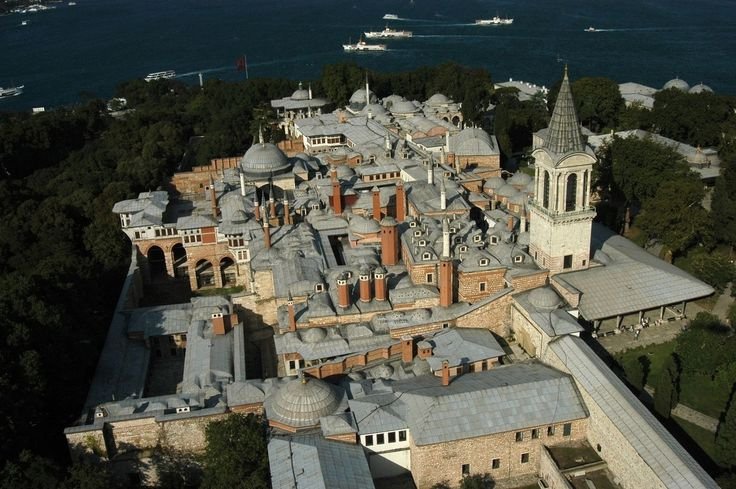Topkapı Palace: History, Architecture, and Visiting Information

Topkapı Palace (Topkapı Sarayı) is one of the most significant historical landmarks of Istanbul and a must-visit site for those interested in Ottoman history, Islamic heritage, and imperial architecture. Serving as the primary residence of Ottoman sultans for nearly 400 years (1465-1856), the palace was the administrative, educational, and cultural center of the empire.
Today, Topkapı Palace Museum houses an unparalleled collection of imperial artifacts, Islamic relics, and breathtaking Ottoman architecture, making it one of the most visited museums in Turkey.
This guide provides a comprehensive look into Topkapı Palace’s history, architectural wonders, ticket information, and must-see sections.
History of Topkapı Palace
A Palace Built for an Empire
After the Ottoman conquest of Constantinople in 1453, Sultan Mehmed II (Mehmed the Conqueror) ordered the construction of Topkapı Palace in 1460, completing it by 1478. The palace was strategically built on Seraglio Point, overlooking the Bosphorus, the Golden Horn, and the Sea of Marmara.
For nearly four centuries, the palace functioned as the heart of the empire, housing sultans, their families, high-ranking officials, and servants. It was the site where important decisions were made, diplomatic meetings were held, and royal ceremonies took place.
In 1856, Sultan Abdülmecid I relocated the Ottoman court to the more European-styled Dolmabahçe Palace, marking the end of Topkapı’s role as the main royal residence.
Transformation into a Museum
After the fall of the Ottoman Empire, Mustafa Kemal Atatürk declared Topkapı Palace a museum in 1924, opening it to the public as one of Turkey’s first national museums. Since then, it has been a major historical attraction, welcoming millions of visitors every year.
Architectural Highlights
Topkapı Palace consists of four interconnected courtyards and multiple buildings, covering an area of 700,000 square meters.
First Courtyard: The Imperial Gate & Hagia Irene
- Entry is through Bab-ı Hümayun (Imperial Gate), a grand entrance leading to the palace complex.
- Houses Hagia Irene, a Byzantine-era church that predates the palace and now serves as a museum.
Second Courtyard: The Administrative Center
- Kubbealtı (Imperial Council Hall) – Where the grand viziers met to discuss state affairs.
- Palace Kitchens – Once prepared food for over 5,000 people daily, now displaying an extensive collection of Ottoman porcelain and kitchenware.
- Gate of Felicity (Babüssaade) – Leads to the sultan’s private domain.
Third Courtyard: The Private Quarters
- The Audience Chamber – Where the sultan received foreign ambassadors and high-ranking officials.
- Topkapı Treasury – Home to priceless artifacts, including:
- The Spoonmaker’s Diamond (86 carats)
- The Topkapı Dagger, decorated with emeralds.
- Imperial thrones, golden artifacts, and rare jewels.
- The Holy Relics Chamber – Holds sacred Islamic artifacts, including:
- The Prophet Muhammad’s cloak and sword
- Hair from the Prophet’s beard
- Keys to the Kaaba
The Harem: A Palace Within the Palace
One of the most fascinating sections of Topkapı, the Harem housed the sultan’s family, concubines, and eunuchs.
- Features over 400 rooms, private baths, and richly decorated halls.
- Notable areas include the Queen Mother’s Chambers, the Courtyard of the Eunuchs, and the Sultan’s Private Apartments.
Fourth Courtyard: The Sultan’s Retreat
- Features elegant pavilions and gardens used for relaxation.
- Baghdad Pavilion and Yerevan Pavilion, built to commemorate Ottoman victories.
- Offers breathtaking panoramic views of the Bosphorus.
Visiting Information
Opening Hours
Topkapı Palace is open every day except Tuesdays.
- Winter Season (October – April): 9:00 AM – 5:00 PM
- Summer Season (April – October): 9:00 AM – 6:45 PM
⛔ Closed on: Tuesdays, January 1st, and the first day of religious holidays.
Ticket Prices & Entrance Fees
- Topkapı Palace Museum Ticket: €25
- Harem Section Ticket: €15 (separate ticket required)
- Museum Pass Istanbul: Includes access to Topkapı Palace and other historical sites for €60.
🎟 Where to Buy Tickets?
- Official Museum Website (recommended for online bookings)
- On-Site Ticket Booths (expect long queues during peak hours)
- Online Travel Platforms offering skip-the-line options
Best Time to Visit
- Early Morning (9:00 AM – 11:00 AM): Less crowded, ideal for exploring the Harem.
- Late Afternoon (4:00 PM – Closing): Perfect for enjoying sunset views over the Bosphorus.
- Avoid Midday: The busiest time with the largest crowds.
Nearby Attractions
- Hagia Sophia – Located next to the palace, one of the most famous Byzantine and Ottoman landmarks.
- Blue Mosque – A stunning imperial mosque known for its exquisite İznik tiles.
- Basilica Cistern – An underground water reservoir with mystical columns and dim lighting.
- Gulhane Park – A beautiful park offering a peaceful escape from the city crowds.
Frequently Asked Questions
Is Topkapı Palace worth visiting? Absolutely! It is one of the most important historical sites in Turkey, offering a deep dive into Ottoman imperial life and treasures.
How long does a visit take? A full visit, including the Harem and Treasury, takes around 3-4 hours.
Is the Harem included in the general ticket? No, it requires a separate ticket.
Can I take photos inside? Photography is allowed in most areas, but flash is prohibited in certain sections.
Conclusion
Topkapı Palace is a must-visit for history enthusiasts, offering an unparalleled look into Ottoman imperial life, breathtaking architecture, and priceless treasures. Whether you’re exploring the Harem, admiring the Treasury, or enjoying panoramic views from the Fourth Courtyard, this iconic landmark provides an unforgettable experience.
Plan your visit and immerse yourself in the grandeur of the Ottoman Empire at Topkapı Palace!
Responses